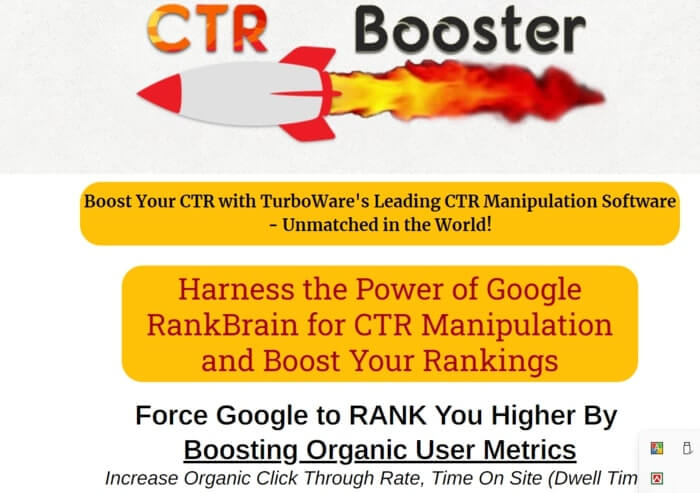Unlock Higher Positions with Efficient CTR Manipulation Techniques
Unlock Higher Positions with Efficient CTR Manipulation Techniques
Blog Article
Maximizing Organic Click-Through Rates With CTR Manipulation
The optimization of natural click-through rates (CTR) is a nuanced venture that rests on recognizing both individual psychology and effective content discussion. By leveraging critical adjustment techniques, such as powerfully crafted headlines and aesthetically appealing elements, marketing professionals can significantly boost user interaction. The landscape is raging with misconceptions and oversimplifications about what really drives CTR. As we check out the intricacies of these methods, it ends up being vital to recognize the underlying principles that can cause continual success in recording audience interest. What truly establishes apart the efficient from the ineffective in this vital aspect of digital advertising and marketing?
Recognizing Click-Through Rates
Understanding click-through prices (CTR) is important for evaluating the effectiveness of online advertising approaches. CTR measures the percent of customers who click a particular link or ad contrasted to the total variety of individuals that see it. A higher CTR suggests that the web content is involving and relevant to the target market, while a lower CTR might indicate a need for optimization.
To determine CTR, divide the number of clicks by the number of impacts and multiply by 100. If an ad receives 300 clicks out of 10,000 perceptions, the CTR would certainly be 3%. This statistics is essential for evaluating numerous elements of digital marketing, including seo (SEO), e-mail campaigns, and social media sites advertising and marketing.
Additionally, examining CTR aids marketing professionals identify which approaches yield the best outcomes and which call for refinement. By concentrating on boosting CTR, companies can boost their material's presence and efficacy, causing raised website traffic and possible conversions. Understanding the nuances of CTR is fundamental for any type of marketer aiming to optimize their on the internet existence and optimize roi (ROI)

The Psychology of User Habits
Customer habits is substantially influenced by psychological aspects that determine just how individuals connect with on the internet content. Comprehending these elements is essential for enhancing click-through rates (CTR) in natural search outcomes.
Psychological feedbacks likewise dramatically effect customer actions. Content that reverberates mentally can set off a feeling of urgency or inquisitiveness, motivating customers to click. In addition, social proof-- such as customer evaluations or ratings-- can improve count on and encourage interaction, as individuals typically want to the habits of others to inform their very own decisions.
Furthermore, the principle of deficiency can drive clicks - CTR Manipulation Press Release. Limited-time offers or exclusive web content produce a fear of losing out (FOMO), compelling customers to act quickly. Recognizing these psychological drivers allows marketing professionals to develop more compelling web content that reverberates with their target market
Effective CTR Adjustment Techniques
Leveraging emotional understandings can substantially boost click-through rates (CTR) through targeted manipulation methods. One of one of the most efficient approaches is the use of engaging headings that stimulate CTR Manipulation curiosity or necessity. Phrasing titles as inquiries or incorporating numbers can attract more interest, prompting individuals to click.
An additional technique involves enhancing meta descriptions to produce a feeling of relevance and immediacy. By clearly detailing the advantages or remedies provided in the web content, you can engage prospective visitors and persuade them to click. Furthermore, using power words-- such as "special," "confirmed," or "totally free"-- can improve the appeal of your content.
Aesthetic elements additionally play a crucial duty. Integrating appealing pictures or thumbnails can attract customers in and improve CTR. A/B testing various visuals can help identify which pictures reverberate ideal with your target market.
Lastly, making certain that your material promises deliverable worth leads to greater CTR. When individuals perceive that clicking will offer them with purposeful understandings or remedies, they are more probable to involve. By employing these techniques thoughtfully, marketers can effectively manipulate CTR to their benefit while preserving ethical criteria.
Typical Myths Regarding CTR
Numerous misconceptions surround click-through prices (CTR) that can lead online marketers to make misguided choices. While a high CTR recommends that more users are clicking, it does not guarantee sales this post or conversions.
Another usual idea is that CTR is an isolated metric. In fact, CTR should be reviewed in conjunction with other performance signs, such as bounce price and conversion rate, to get a holistic view of project success.
In addition, some marketing professionals assume that maximizing for CTR alone suffices. Focusing exclusively on CTR can lead to clickbait tactics that may attract clicks but stop working to involve individuals meaningfully. GMB CTR Manipulation. This technique can damage brand credibility and lead to reduced retention prices
Finally, there is an idea that CTR techniques are globally reliable. The reality is that optimum CTR strategies can vary dramatically throughout sectors and target audiences, necessitating customized methods for different market sectors. Comprehending these misconceptions is important for creating efficient CTR strategies that align with overarching advertising and marketing goals.
Measuring CTR Success
Although high click-through rates (CTR) can show successful engagement with web content, measuring their real success needs a detailed evaluation of numerous elements. Initially, it is important to recognize the context in which the CTR is attained. As an example, a high CTR on a deceptive title might not translate to purposeful interaction or conversions, ultimately reflecting inadequately on the brand name's credibility.
Second, reviewing the source of traffic is critical. Organic website traffic from internet search engine can read the full info here represent a robust web content approach, while clicks from irrelevant resources might suggest a lack of targeting. Furthermore, determining the subsequent individual habits is important; examining metrics such as bounce price, time invested on web page, and conversion prices can provide much deeper insights right into the quality of the interaction launched by the CTR.

Conclusion

The optimization of natural click-through prices (CTR) is a nuanced venture that pivots on comprehending both individual psychology and effective content discussion. CTR measures the portion of users who click on a certain link or ad compared to the total number of customers that view it. A higher CTR suggests that the content is engaging and appropriate to the target audience, while a reduced CTR may indicate a demand for optimization.
Concentrating exclusively on CTR can lead to clickbait methods that may draw in clicks yet stop working to involve users meaningfully. Additionally, determining the succeeding user behavior is vital; evaluating metrics such as bounce price, time invested on web page, and conversion rates can supply much deeper understandings right into the quality of the interaction launched by the CTR.
Report this page